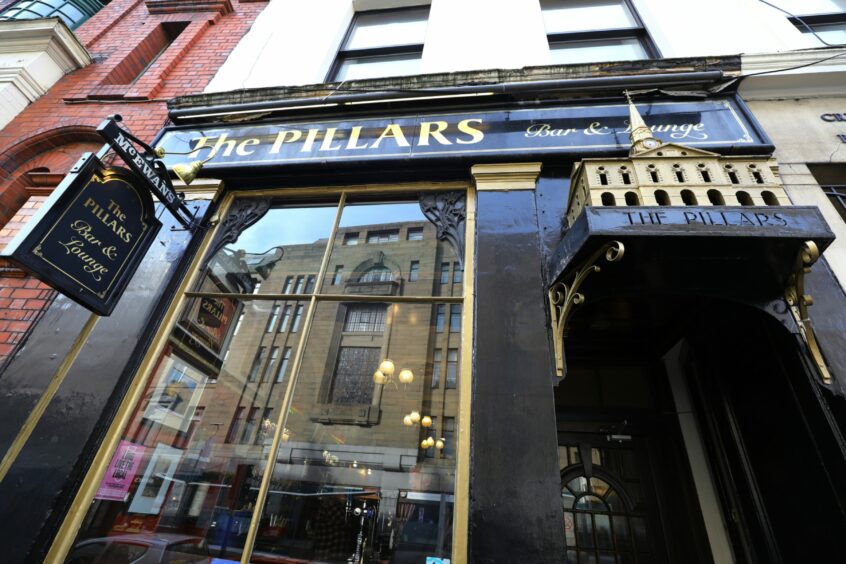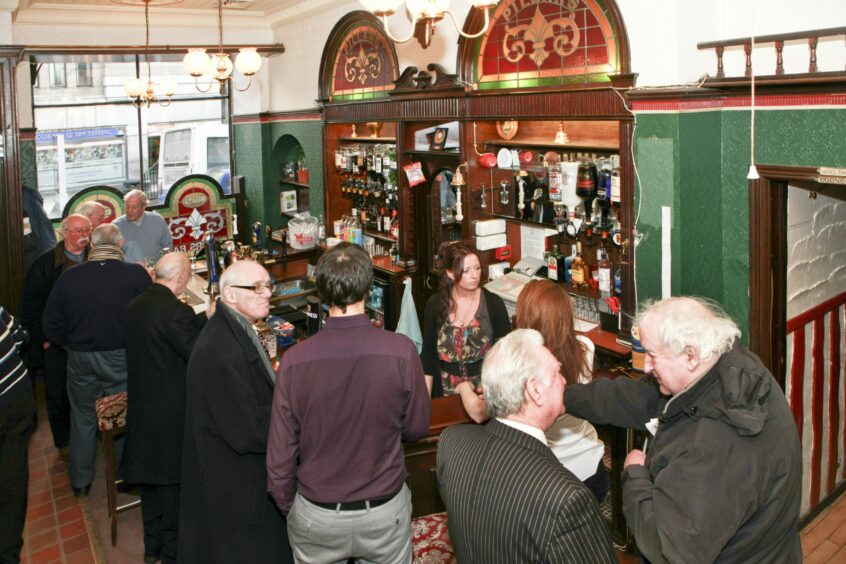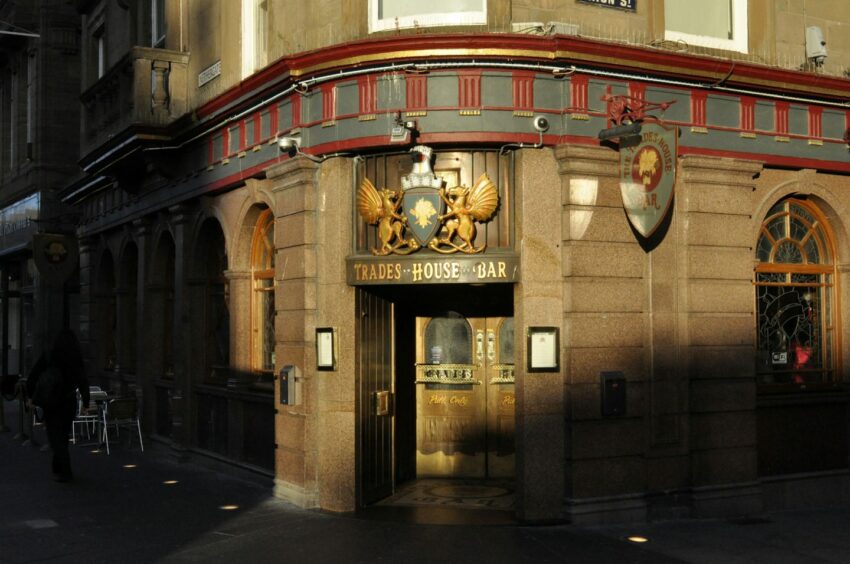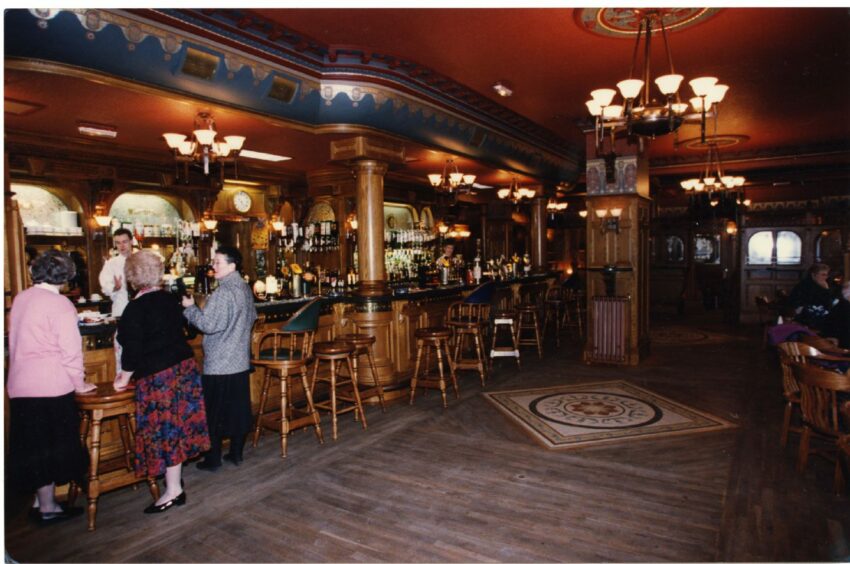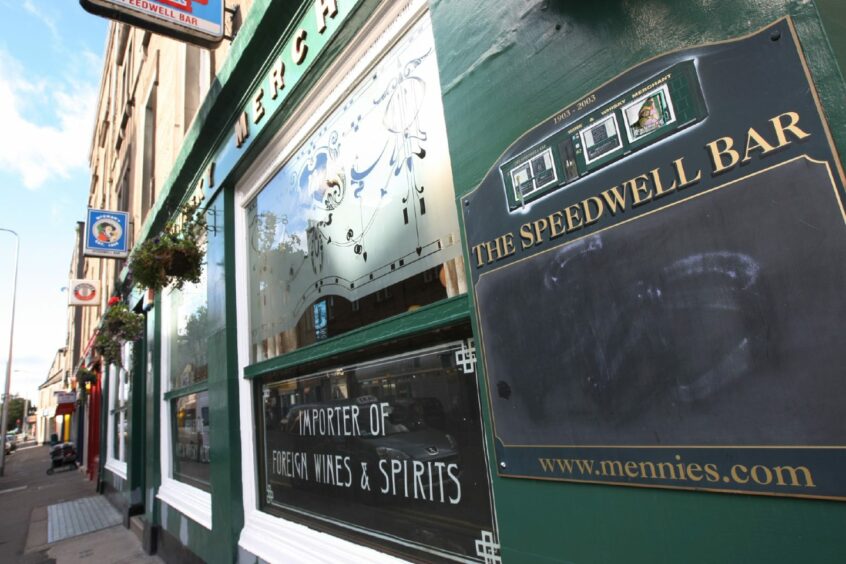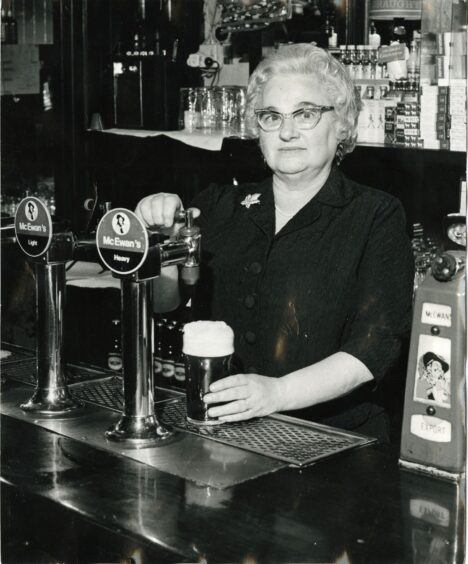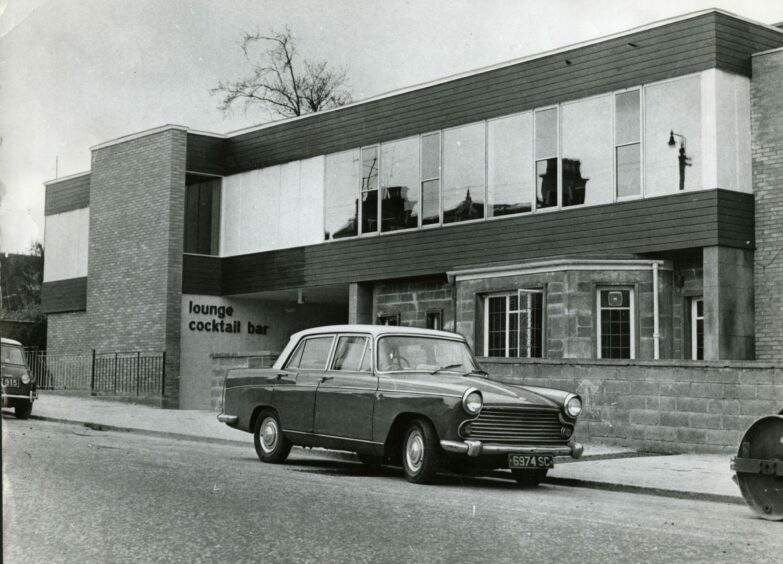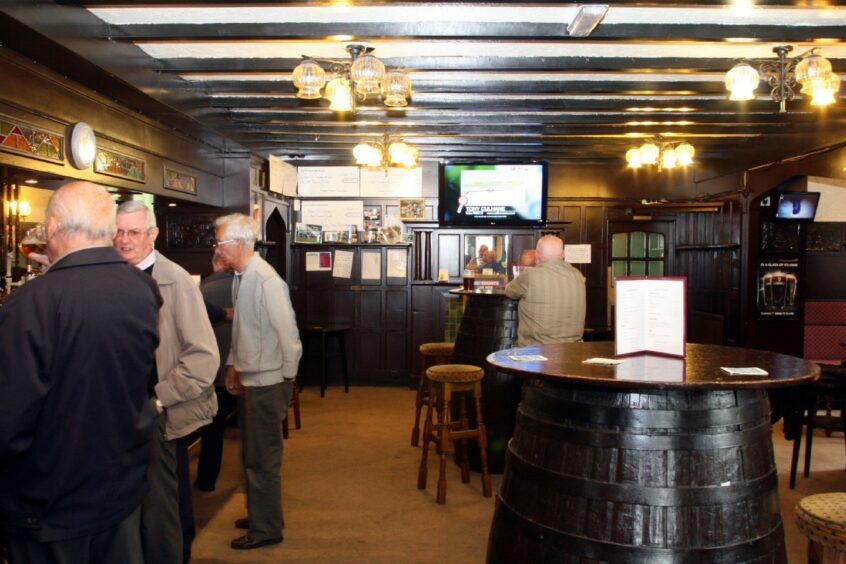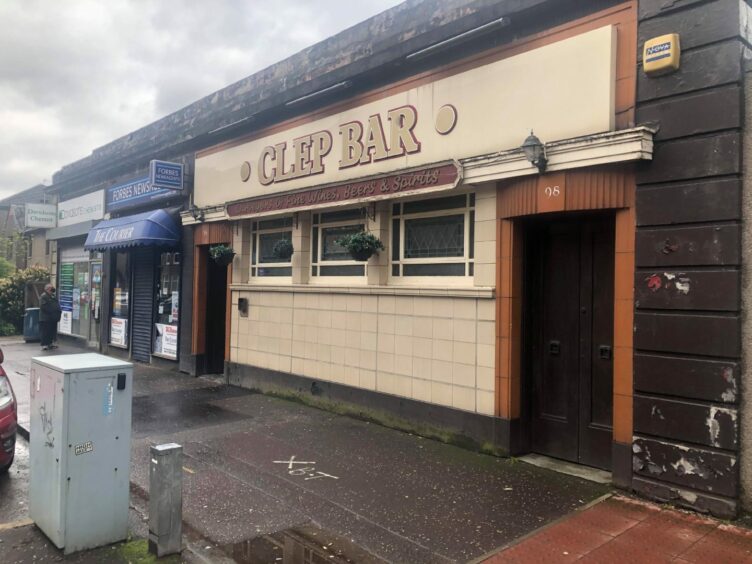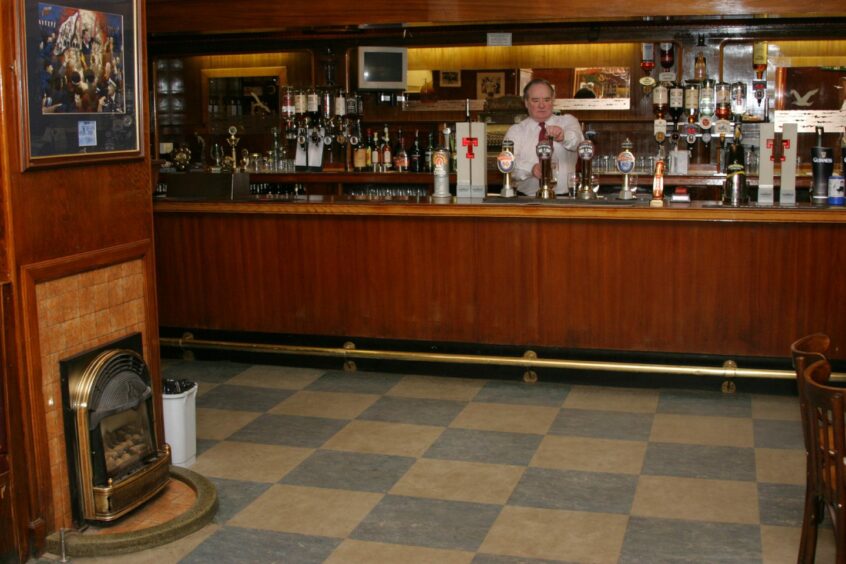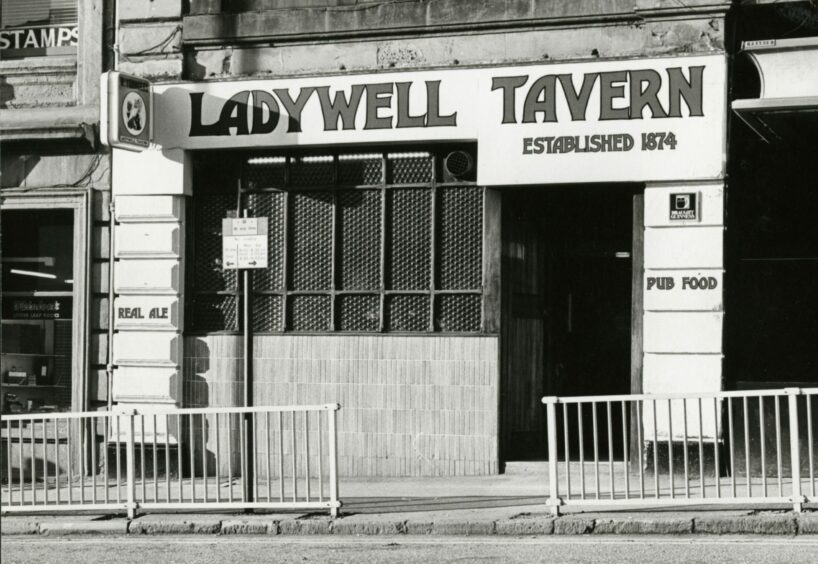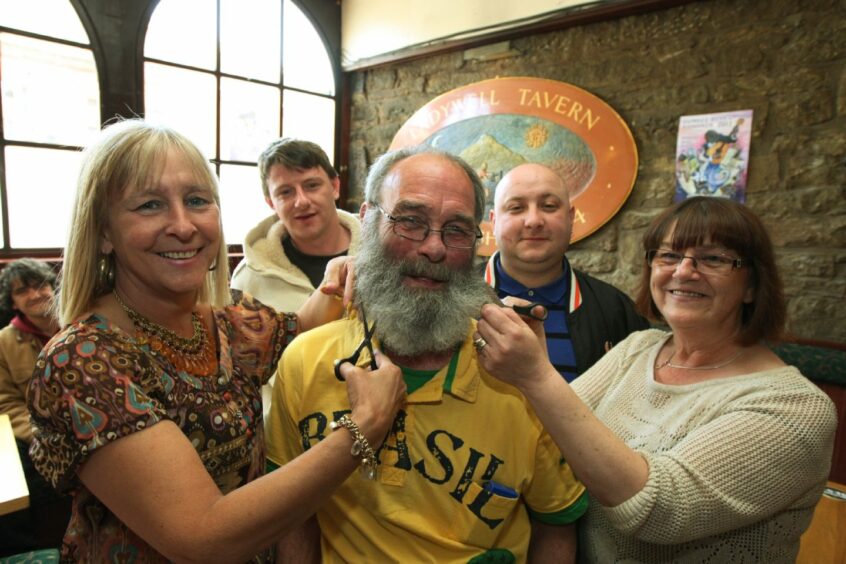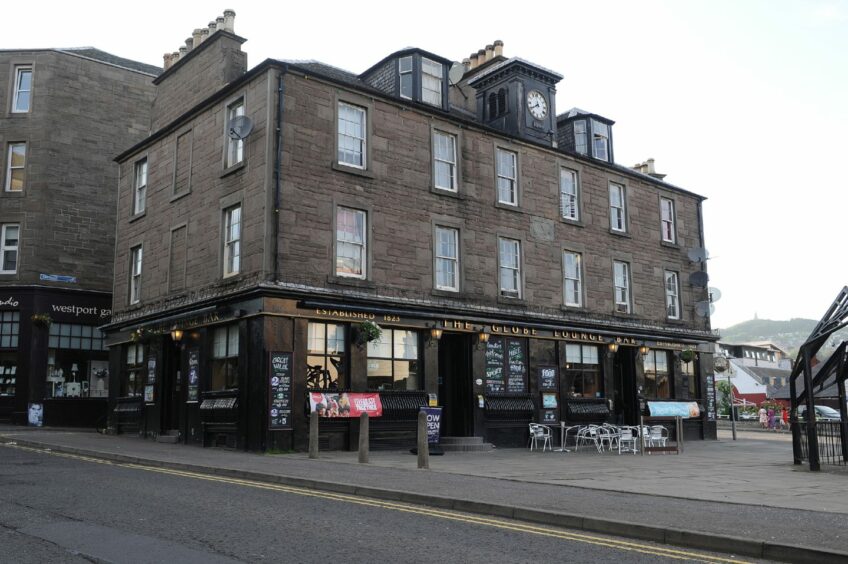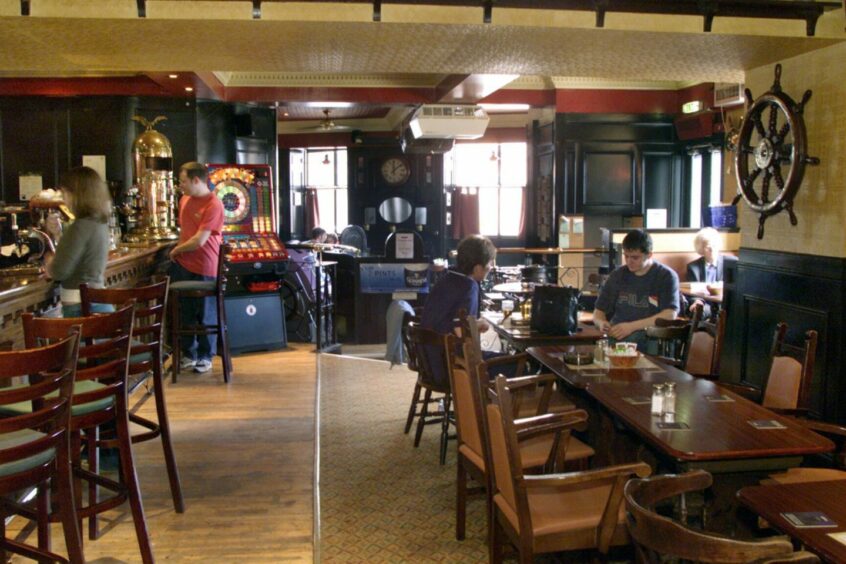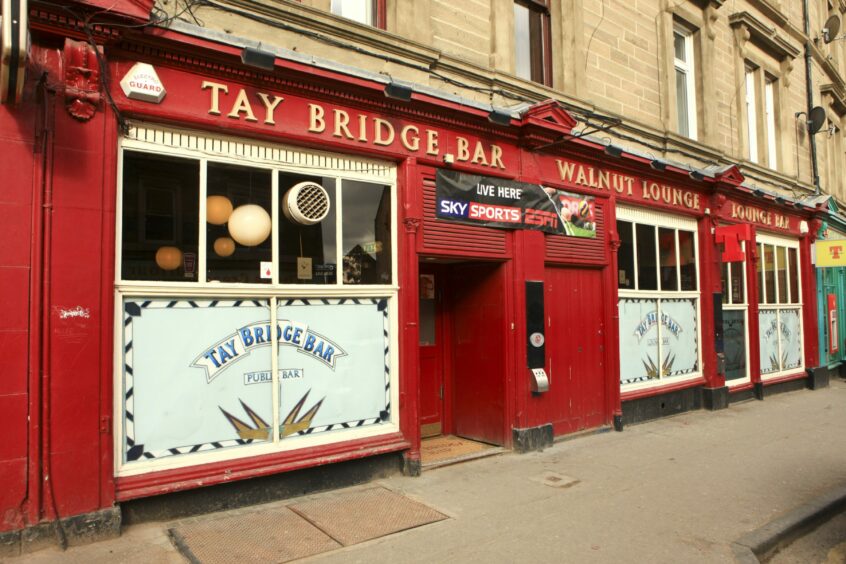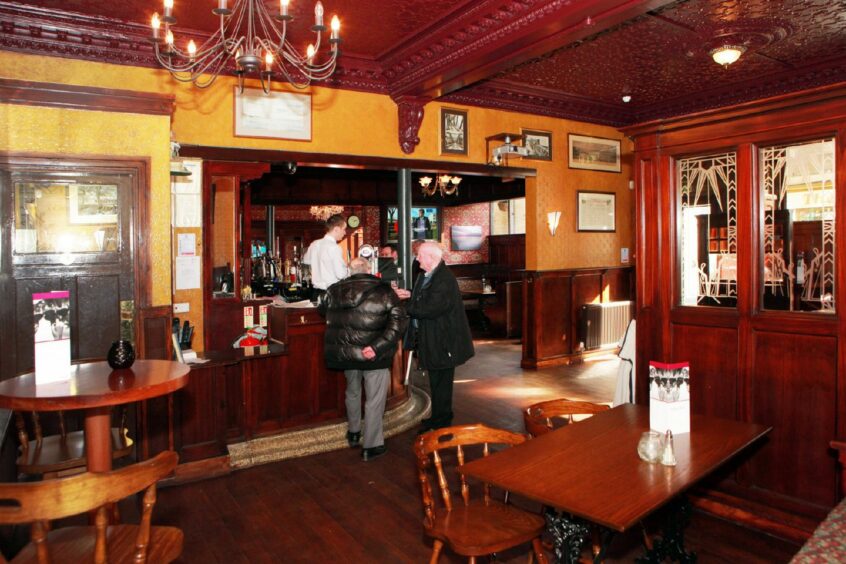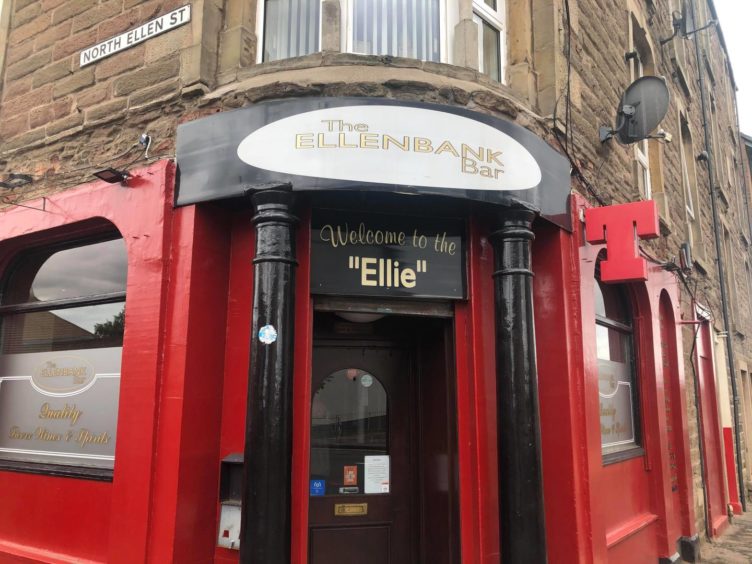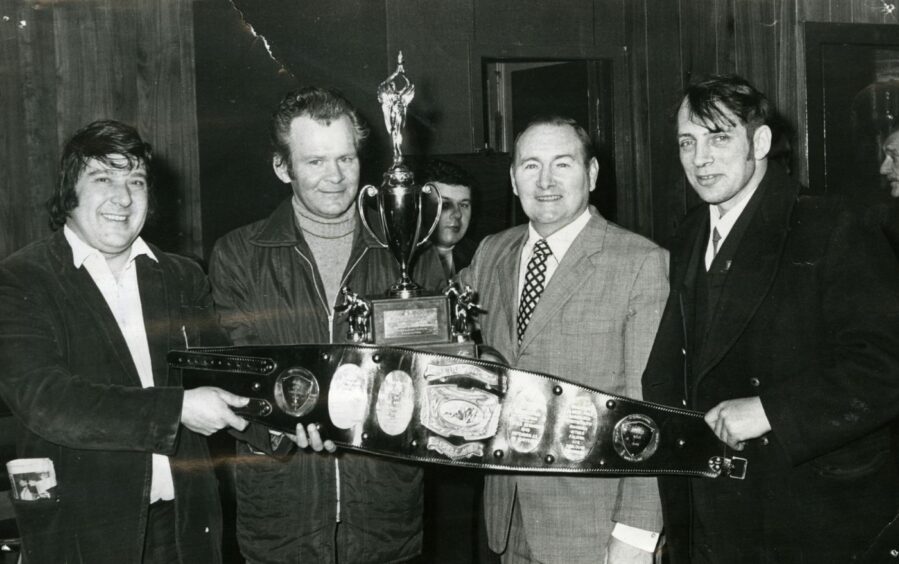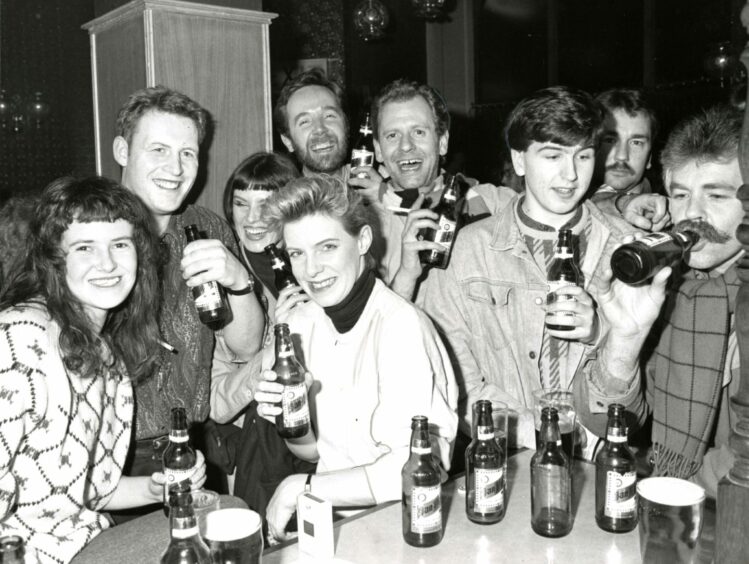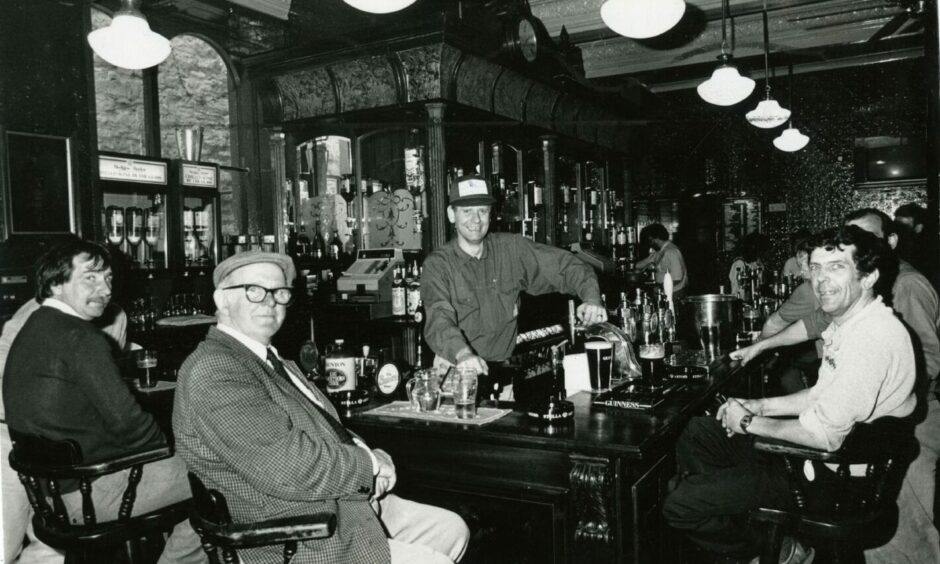
The sale of The Phoenix has put pubs in Dundee in the spotlight.
The Nethergate bar has served drinks to successive generations for more than 150 years and an urban myth persists that Frank Sinatra once called in for a pint ahead of a show at the Caird Hall.
Regulars have urged the new owners to protect the institution, which is up for sale for £825,000.
But what other pubs in Dundee deserve the same status and adulation as The Phoenix?
Author Brian King – who has written a book about Dundee’s boozers – delivers his verdict.
1: The Pillars, Crichton Street
A long history, like that of the Phoenix, can be one aspect of a classic pub.
The Pillars is one that can trace its history back to 1864 when Thomas Skene obtained an alcohol licence for what had previously been a working men’s coffee house establishing the premises as a public house.
Brian said: “Unique features can also help a pub’s reputation.
“The Pillars certainly has one of these in the form of the model at its door.
“The pub’s name commemorates Dundee’s Town House which once stood where the City Square is today.
“It was demolished in 1932 and the same year a commemorative copper model was installed above the door of the pub at 9 Crichton Street.”
2: The Trades House, Nethergate
A long history may help to make a classic pub but if it is not already there, it can always be created.
For around a century to the 1990s, what is now the Trades House Bar was a bank.
Brian said: “A visitor to the pub would be forgiven for thinking that that this was someplace which dated from the 1890s rather than the 1990s, until when it had been a bank.
“Many modern pubs have been fitted out in a late Victorian or Edwardian style but few are as convincing as The Trades House.
“The reason for this is probably the degree of craftsmanship which went into the construction of the interior – quite appropriate considering that the pub celebrates various trades which have contributed to Dundee life.
“Of particular interest are the various stained-glass windows.
“There are depictions of shipbuilding, journalism and engineering – all enterprises that have contributed to Dundee in relatively modern times but there are also windows showing a baker, a weaver, a dyer, a stonemason and a malt man – all representatives of trades with a long history in the city.”
3: The Speedwell Bar, Perth Road
Many would consider a good landlord or landlady to be a vital ingredient of a classic pub.
The Speedwell Bar has had several, beginning in 1903 with James Speed from whom the pub gets its name.
Brian said: “James Speed died in 1923.
“The new tenant was Henry Mennie.
“The pub has been known as Mennie’s ever since.
“In 1950 the licence was transferred to his daughter in law Isabel – the formidable Mrs Mennie who many will still remember.
“In 1995 the Speedwell was bought by another respected Dundee landlord, Jonathan Stewart.
“The pub also benefits from being one of the country’s finest surviving examples of an Edwardian pub, earning it status as a category B-listed building.
“The Speedwell would still be recognisable to a customer of James Speed’s from 1903 and for some people would be the very definition of a classic pub.”
4: The Downfield, Strathmartine Road
Some classic pubs, like Mennie’s, become so closely associated with a landlord that the pub gains their name as a nickname.
While Mrs Mennie is still well within living memory, though, it is the best part of a century since James ‘Doc’ Stewart ran the Downfield Tavern as it was then known, yet his name is still commonly used for the much expanded premises
Brian said: “In 1893, Stewart married Jessie Warner whose family had been the licensees of the Downfield Tavern since 1871.
“Following Jessie’s death in 1918, ‘Doc’ Stewart continued to run the Downfield until his own death in 1935 at the age of 75.
“How, though, did the nickname Doc come about?
“One theory is that in the days when visiting a public house was not as acceptable as it is now, and was considered something to be looked down upon, children would be told that their father had gone to the doctor’s or the chemist’s or some other such euphemism.
“It seems that Doctor Stewart had so many ‘patients’ that the name stuck.”
5: The Clep, Clepington Road
Some pubs are considered classics because customers can rely on their unchanging nature.
In the case of the Clep, this is due to its long period of ownership by the Fitzpatrick family who ran it from 1940 to 1990.
Brian said: “The exterior of the Clep, with its tiled façade and leaded windows with the central one advertising Bernard’s Edinburgh Ales, remains largely unchanged from its early days.
“The three sections of the pub – the public bar, lounge, and jug and bottle or off-sales counter are all as they originally would have been.
“Original features include the bar counter and gantry as well as the bench seating with its wooden dividers, the fixed tables and the tiled fireplace.
“There is also a pre-decimal till and working service bells set into the walls.
“By the time the Fitzpatrick family left, The Clep had become a Category B-listed building.”
6: The Ladywell Tavern, Victoria Road
There are many pubs which change their names on a regular basis and it is difficult for these to become established as classics as they are not around long enough to establish themselves as classics.
The Ladywell Tavern, has retained the same name for 120 years.
Brian said: “The Victoria Brewery was built on the site of the old Lady Well in 1874 and the well’s water was initially used for brewing the beer, though this had to be augmented with water from the city supply.
“In 1903 the brewer John Neave successfully applied for a full public house licence for the premises at 16 Victoria Road.
“This became the Ladywell Tavern.
“Whatever changes subsequent owners or licensees made, they did not alter the pub’s name.
“Few of Dundee’s historic pubs have not – even temporarily – changed their name.
“Other changes were certainly made over the years but in 1998, the Ladywell Tavern was extensively refurbished to return it to its original character.”
7: Molly Malone’s, West Port
Some bars, like the Clep and the Ladywell Tavern may become classics by their unchanging nature but it is others’ ability to survive and adapt that has helped them to achieve this status.
There has been a pub in the landmark building with the clock at the West Port for well over a century and for most of this time it was known as The Globe.
Brian said: “Somehow, the building managed to survive when much of neighbouring property in the nearby Overgate and Hawkhill was demolished in the 1960s.
“In the 1970s, though, it began to fall into disrepair.
“Nevertheless, the Globe survived to see the building refurbished and eventually expanded to take over the whole of the ground floor.
“In 2019 the pub underwent a successful refurbishment and changed its name to Molly Malone’s.
“It remains a much-loved venue – a testament to its staying power and ability to change.”
8: The Taybridge Bar, Perth Road
It is always possible that a pub’s classic status could be destroyed if change is not handled well.
The Taybridge Bar is an example of how radical change can be made sympathetically.
Brian said: “It originally consisted of three rooms – a bar, a lounge and a snug.
“The most famous of these is what became known as the Walnut Lounge due to its walnut veneer panelling.
“The pub has now been opened out into a single, long, wide room.
“The 21st Century renovation, though, has been done tastefully and under strict conditions, with much of the pub’s original character retained.
“Of course, it is not just the layout that gives the Taybridge Bar its classic status.
“The pub has become well known far from Dundee thanks to a song written by the late Dundee musician Michael Marra called Frida Kahlo’s visit to the Taybridge Bar, which appears on his album Posted Sober.”
9: The Ellenbank Bar, Alexander Street
The Ellenbank Bar is perhaps most well-known for two things – a famous landlord and a famous visitor.
The landlord, George Kidd, was a superstar of the professional wrestling world.
Brian said: “After taking the Scottish lightweight title in 1947, he went on to secure the British then the European title.
“The Ellenbank’s most famous visitor appeared there at the behest of George Kidd in September 1964 when he was introduced to several luminaries of Dundee’s boxing scene.
“Sugar Ray Robinson had held the world welterweight title from 1946-1951 before going on to hold the middleweight title.
“Robinson’s visit to Dundee came at a time when he was in his 40s and long past his best as a fighter.
“Nonetheless, it is still remarkable to think that one of the world’s greatest-ever sportsmen visited a Dundee pub.”
10: The Phoenix, Nethergate
The Phoenix gets its name from a corruption of Fenwick – the name of the original landlord.
In 1866, Peter Fenwick was granted a licence for the premises at 85 Nethergate but by 1890 the family moved to the present address at 103-105 Nethergate.
Brian said: “The pub remained in the ownership of the Fenwick family until 1968.
“It was later renamed The Town and Gown to reflect its position between the university and the city centre but later reverted to the Phoenix name.
“It remains to be seen whether the Phoenix pub will rise again like the Phoenix of Greek mythology which is said to be reborn from the flames of its nest.
“Dundee pub-goers will certainly be hoping that this is the case.”
- Dundee Pubs is published by Amberley Publishing.
